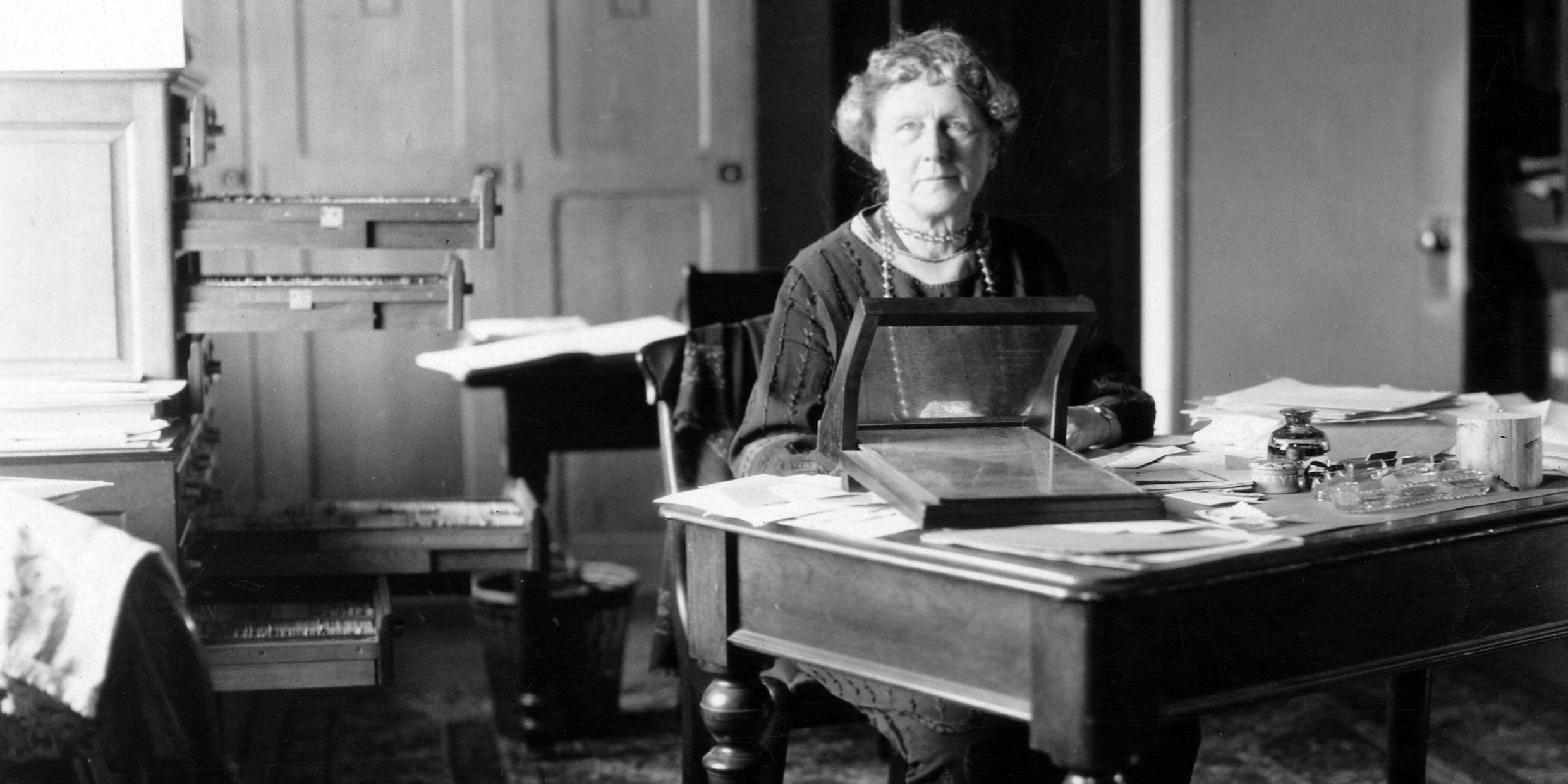Originally published 1 May 1989
In 1934, the noted astronomer Annie Jump Cannon returned to her alma mater, Wellesley College, to speak to her 50th class reunion. She told this story:
“During our senior year, one of the distinguished guests was Matthew Arnold, who gave his lecture on Emerson, characterized as the friend and lover of those who live in the spirit. When Mr. Arnold was being driven up through the College grounds, he exclaimed, ‘Extraordinary, extraordinary. All for young ladies.’ Then, putting his monocle on for a close survey, he asked, ‘But what are their chances?’ ”
Arnold’s question was particularly applicable to young Wellesley ladies who wished to pursue careers in astronomy, as did Miss Cannon. Even now, more than a century later, the answer to his question (for aspiring astronomers) has to be “better, but still not equal to a man’s.”
During this past week the Henry Draper Medal of the National Academy of Sciences for distinguished work in astronomical physics was awarded jointly to Riccardo Giovanelli and Martha Haynes. Haynes is the second woman to win the Henry Draper Medal. The first was Annie Jump Cannon, in 1933.
Martha Haynes is a specialist in radio astronomy, galaxy evolution, and the large-scale structure of the universe. With Giovanelli, she discovered the largest known structure in the universe, a string of galaxies more than 700 million light-years long and lying some 200 million light-years from the sun.
Like Annie Jump Cannon, Haynes is a graduate of Wellesley College, class of 1973, and therein hangs a tale.
In a telephone interview, Martha Haynes described how she came to astronomy. She was an “outdoorsy” child with an interest in nature. In the 7th grade she had a lucrative job as a babysitter. Her financially strapped brother, who was in college, wanted a telescope and talked Martha into buying one for herself. It came addressed to him. “I was insulted,” said Haynes.
Observatory in the attic
The brother ended up in business; the sister decided on a career in astronomy. At Newton High School she was often the only female in physics classes, and took a lot of teasing about “being in the wrong place.” She chose Wellesley because it was a woman’s college.
At Wellesley, Haynes found a role model in Annie Jump Cannon. In dress-up skits at the college, she always played Cannon. And she learned an important lesson from her distinguished predecessor — “the determination not to be deterred.”
Undeterable Annie Cannon made remarkable contributions to astronomy at a time when women were generally thought incapable of serious scientific work. Her love affair with the stars began with a makeshift observatory in the attic of her family’s home in Delaware. After study at Wellesley and Radcliffe, in 1897 she joined the staff of the Harvard College Observatory as a protege of director Edward Pickering.
But not, of course, as an astronomer with academic rank. Cannon was one of “Pickering’s harem,” a group of women who received 25 to 35 cents an hour to analyze and catalogue the voluminous stellar data accumulated by male astronomers at telescopes.
Cannon’s immediate predecessor, Antonia Maury, had proven unsatisfactory to Pickering because her “passion for understanding” was thought to impede her efficiency for drudge work. Annie Cannon was less offensive to Pickering, but no less talented. Both women made important contributions to the understanding of stellar spectra (the colors in starlight).
Important contributions
In the early decades of the 20th century, Annie Cannon personally classified the spectra of more than 300,000 stars. Every astronomy student today learns by rote the OBAFGKM classification scheme of stellar spectra that Cannon invented (“Oh, be a fine girl, kiss me,” is the mnemonic used by generations of mostly male students to remember the sequence of letters). Her work is a pillar upon which rests our knowledge of stars.
Cannon was made an honorary member of the Royal Astronomical Society in 1914, the first woman admitted to that body, and received honorary degrees from institutions here and abroad. But it was not until 1938, when Annie Cannon was 74, that Harvard University granted her academic status by naming her professor of astronomy.
By contrast, Martha Haynes is Associate Professor of Astronomy at Cornell at an age when such distinctions can be thought to matter. For her research she has access to the National Radio Observatory’s telescope at Arecibo, Puerto Rico, the largest in the world.
And if Matthew Arnold could see the science facilities at Wellesley College today, he would undoubtedly be astonished. The “young ladies” of Wellesley have become “women,” and their chances of doing top-notch science are much improved.
Still, Haynes was the only woman of about 30 persons in her graduate class in astronomy at Indiana University, and she is very much aware of the problems working in a male-dominated field “when you’re not one of the guys.”
“Things have changed,” says Martha Haynes, thinking back to the time of Annie Jump Cannon. Then adds: “But they are not perfect.”



